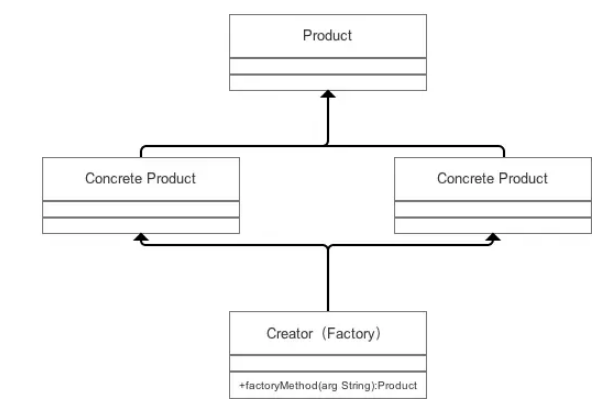简单工厂模式
2019-02-25 17:17 剑动情缥缈 阅读(130) 评论(0) 编辑 收藏 举报1.基本概念
- 又叫做静态方法模式,因为包含了一个静态方法
- 工厂用来生产产品
- 解决的问题:将类的实例化操作与类使用者使用类的操作分开,使用者不需要知道具体参数就可以实例化所需要的产品类,从而避免在客户端指定,实现了解耦
- UML类图:


2.代码实现

package com.chengjie; interface Product { void show(); } class ProductA implements Product { @Override public void show() { System.out.println("ProductA.show() is called!"); } } class ProductB implements Product { @Override public void show() { System.out.println("ProductB.show() is called!"); } } class ProductC implements Product { @Override public void show() { System.out.println("ProductC.show() is called!"); } } class Factory { public static Product createProduct(String type) { switch (type) { case "A": return new ProductA(); case "B": return new ProductB(); case "C": return new ProductC(); default: return null; } } } public class TestSimpleFactoryPattern { public static void main(String[] args) { Factory.createProduct("A").show(); Factory.createProduct("B").show(); Factory.createProduct("C").show(); Factory.createProduct("D").show(); } }
3.优点
- 将创建对象工作与使用对象工作分开,使用者不必关心累的创建过程,实现了解耦
4.缺点
- 工厂类集中了所有实例(产品)的创建逻辑,一旦这个工厂不能正常工作,整个系统都会受到影响;
- 违背“开放 - 关闭原则”,一旦添加新产品就不得不修改工厂类的逻辑,这样就会造成工厂逻辑过于复杂。
- 简单工厂模式由于使用了静态工厂方法,静态方法不能被继承和重写,会造成工厂角色无法形成基于继承的等级结构。
5.应用场景
- 客户如果只知道传入工厂类的参数,对于如何创建对象的逻辑不关心时;
- 当工厂类负责创建的对象(具体产品)比较少时。
6.参考链接
https://www.jianshu.com/p/e55fbddc071c



